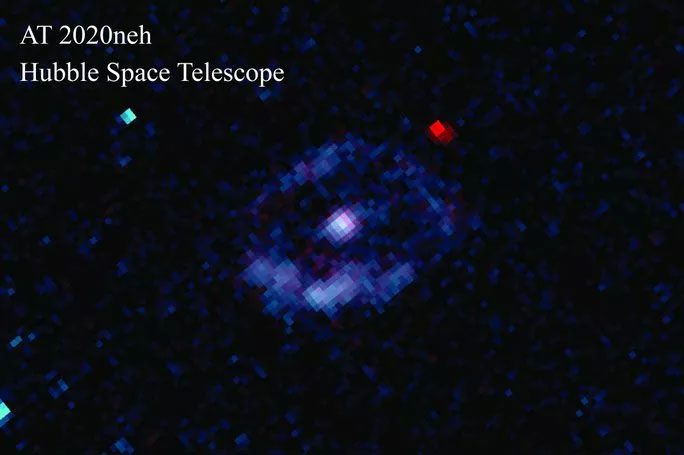A fiery signal has reached NASA’s Hubble Space Telescope, originating from a supermassive black hole with a mass estimated to be between 100,000 and 1 million times that of the Sun.
According to Space, the bright flare named AT 2020neh resulted from a tidal disruption event (TDE) (where a star is torn apart by the tidal forces—an effect of gravity—when it strays too close to the black hole) and was discovered by scientists from the Young Supernova Experiment (YSE) through the analysis of Hubble data.

Actual image of the black hole represented through Hubble data – (Photo: NASA).
In this new study, an international team of scientists led by the University of California, Santa Cruz, traced the path of AT 2020neh and discovered something even more valuable: a supermassive black hole in the dwarf galaxy SDSS J152120.07 + 140410.5, located 850 million light-years away from us.
This is a rare instance where a black hole can be identified through its own spontaneous signaling behavior. The TDE event was triggered by an unfortunate star that ventured too close to the black hole and was torn apart.
This supermassive black hole is estimated to be about 100,000 to 1 million times the mass of the Sun, which places it in the category of an intermediate black hole (mass range of 100 – 100,000 times the Sun) or a supermassive black hole.
Black holes are generally invisible because they are completely dark objects, but the TDE event has made it visible to astronomers due to the radiation emitted that far exceeds the combined light of all the stars in this dwarf galaxy.
With a powerful telescope like NASA’s Hubble, this is an extremely clear “bombshell,” not just a warning signal, but a declaration of existence sent from this cosmic monster to Earth.
Scientists hope that the newly discovered black hole will be on the smaller end of the calculated mass range. If it turns out to be an intermediate black hole, it would be a highly rare discovery, and this finding could pave the way for using TDEs to study and measure the masses of intermediate black holes, a method previously applied to supermassive black holes.





















































